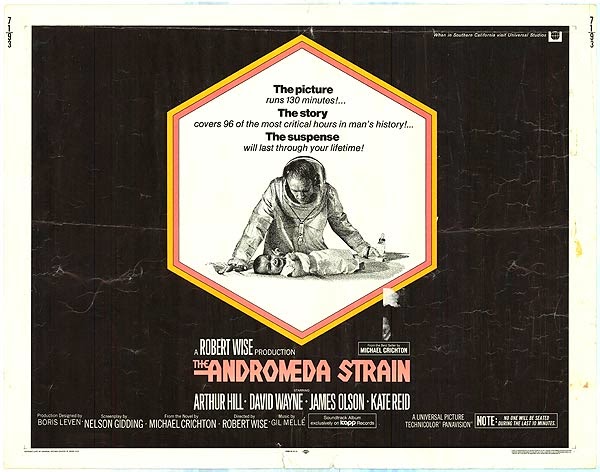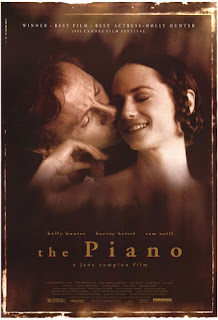April 14th: THE ANDROMEDA STRAIN (Robert Wise, 1971)
Former medical student Michael Crichton had been writing under various pseudonyms for several years before publishing The Andromeda Strain under his own name, a novel that became his first of many bestsellers and would also lead to a substantial career in film. His medical/technological thrillers became known for Crichton's extensive research, with bibliographies at the end of each book to back up his imaginative premises.
The rights to The Andromeda Strain were purchased by Universal Studios for a hefty $250,000 specifically for Oscar-winning producer-director Robert Wise. While known primarily for his musicals West Side Story and The Sound Of Music, his 50-year career as a filmmaker displayed a knack for horror (The Haunting), sci-fi (Star Trek: The Motion Picture, The Day The Earth Stood Still), as well as various dramas and thrillers.
The film was shot primarily on the Universal lot, with the giant, heavily-detailed laboratory set costing $300,000 and taking 6 months to construct, complete with 2 working laser beam guns. Frequent Wise collaborator Boris Leven did the production design, with matte paintings by Hollywood legend Albert Whitlock (Hitchcock's The Birds). Although he did not write the screenplay adaptation, Crichton was present for much of the pre-production and shooting stages.
The cast was made up of veteran character actors instead of recognizable stars, lending more of a believability to the scientists they portrayed. Small changes were made from the novel to the script to create roles for women and minorities, an example set in the genre by the recent Star Trek TV show. While much scientific information is delivered to the audience in a straightforward fashion, Wise keeps the visuals lively, shooting in Cinemascope and utilizing split-screens, as well as split-diopters to keep objects both close to and far from the camera in focus.
The special effects were designed by Douglas Trumbull, who contributed groundbreaking work for Stanley Kubrick's 2001: A Space Odyssey. Here he provided some of the first computerized graphic effects for a feature film, including rotating 3-D maps, and implemented micro electron photography as well as computer-controlled camera work.
The film was a moderate success with mostly positive reviews, but was an important benchmark in science fiction cinema, as well as providing a gateway for Crichton to direct his own films, beginning with cult classic Westworld in 1973.
Running time is 2 hrs, 10 min.










Comments
Post a Comment